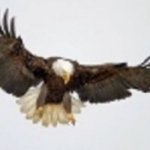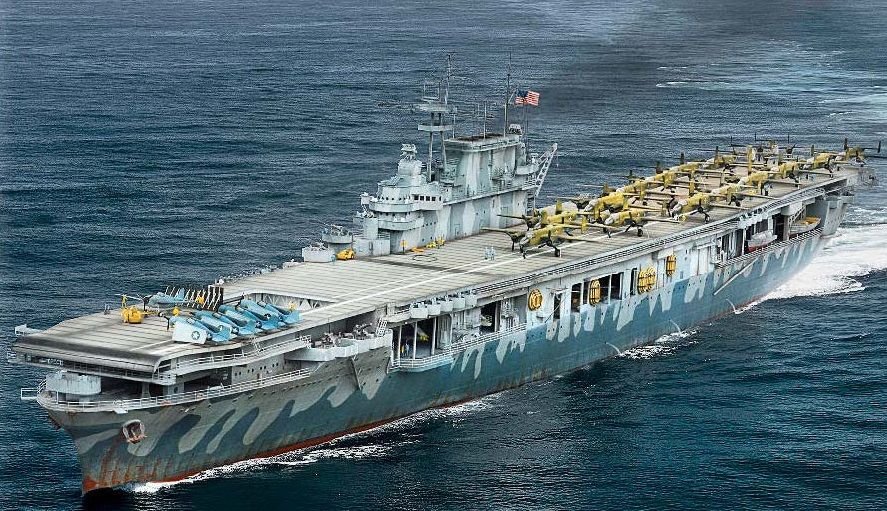-
Posts
4,376 -
Joined
-
Last visited
Content Type
Profiles
Forums
Gallery
Events
Everything posted by Egilman
-
I'm of two minds with panel highlighting as well, it should be very subtle to non-evident on dark aircraft and super shiny aircraft, on light colored aircraft you should be able to see it but it still should be very subtle... At standoff distance you never see it on real aircraft and as shipman said, up close, you only notice it when your eyes are drawn to it.... It's one of those artsy aspects to our hobby, it's there but can anyone say it's really "there".... And I hope everyone understands what I mean here... Perception dictates the application.... It looks good on some models, looks toyish on others... It's up to the modelers decision/preference on what he or she is depicting....
-

US 6” gun by RGL - FINISHED - Panzer Concepts
Egilman replied to RGL's topic in Non-ship/categorised builds
Thanks... -

US 6” gun by RGL - FINISHED - Panzer Concepts
Egilman replied to RGL's topic in Non-ship/categorised builds
Unfortunately I can't find Captain Nightshift on You Tube... I did find a Martin Kovac who uses the handle Night Shift.... And it reveals his layering technique, kinda... Will do more research though... Thanks.. -

US 6” gun by RGL - FINISHED - Panzer Concepts
Egilman replied to RGL's topic in Non-ship/categorised builds
That is stupendous.... Very well executed Brother.... I have several of those just like you, but mine will never look like that.... You have a singular talent... Well Done!!! -

Handley Page Heyford by RGL - FINISHED - Matchbox - 1/72
Egilman replied to RGL's topic in Non-ship/categorised builds
Maybe you could do some work demonstrating your weathering technique for the rest of us that are less adept at such artistry.... I for one would greatly appreciate it... -
I wonder why they did it that way, most kits make the full flaps integral with the bottom wing, easy fix I know, but it shouldn't be a fix at all.... Sure would complicate things if you wanted dropped flaps... Not only the fill, you have to rescribe the rivet details..... Sometimes I just don't understand the engineers that design the molds like this.... Makes no sense...
-

US 6” gun by RGL - FINISHED - Panzer Concepts
Egilman replied to RGL's topic in Non-ship/categorised builds
I'm so glad it was an easy fix, I figured you would want to know before you got farther into finishing... Outstanding work my friend..... -

US 6” gun by RGL - FINISHED - Panzer Concepts
Egilman replied to RGL's topic in Non-ship/categorised builds
There is absolutely no doubt brother, you are one of the masters of scale weathering.... My hat is off to you... You took a what if idea and made it look real.... I'm in AWE... -
Nope, not for Rudel.... Transferred to a German hospital Rudel obtained his release in 1946. He spent his postwar years in Argentina along with all the other nazis providing german technology to the various dictators down there... (and helping keep the likes of Dr Mengle in hiding) He eventually became the German representative for Siemens in South America... In 1950 he emigrated back to West Germany and divorced his wife and got remarried... As a representative of Siemens he helped build the Argentine Air Force into the most powerful in south america working closely with the (very nasty) dictator Juan Peron.... It was as a representative of Siemens that he was called in to consult given his clear experience in close support flying.... Back then they didn't care from whom they got their data and advice from.... Would never happen today....
-
Yep, in 1941 he flew the D-5 variant which was armed with a pair of wing mounted 20mm cannon, after 1943, he flew the "G" variant, the tank buster with 37mm gun pods firing HV tungsten cored armor piercing rounds designed specifically to destroy the KV-1 and T-34.... in '45 he flew the FW-190F ground attack variant... With those kind of weapons destroying tanks was easy... A side note, when Republic was designing the A-10, Rudel was brought in as a consultant (despite his neo-nazi background) as to what ground attack pilots wanted in their aircraft... His recommendations were strongly followed as was his insistence on a 30mm cannon firing the heaviest round possible as the best weapon for dealing with tanks on the battlefield....
-
Depends upon the paint, you want shiny but aluminum looking, Testors Chrome Silver, you want muted but reflective aluminum, Rub-n-Buff over grey primer & Future... Either will give the look of cleaned aluminum, IF, you want the polished mirror look Alcad chrome pen applicator over a perfectly smooth surface primed shiny black... Any of the alcohol based chrome gundam markers will work as well...
-
Yep, it was a cast iron plate that we had made specifically for that job weighed around 450 lbs all by itself.. Machine refurb took place on the open floor and we had overhead cranes to do the lifting and moving... The largest machine I ever ran was a Shaft Lathe, it was used for turning propeller shafts for ships, had a chair you rode on while operating it.... 40 foot long bed and could swing 42 " The definition of heavy industry....
-
When I was working for a machine remanufacturer, we did milling machines on a steel plate... Once we got the case from the builders we would bolt it to the plate and it acted as an index plate.. we could take it from machine to machine and do any machining you needed to do, parallel, perpendicular, horizontal boring, vertical boring all from the one plate... Made the job much much easier saving a lot of setup time....
-
Correct, Then it wasn't the Nuclear armed penetrator version... The purpose of the slipper tanks was to extend loiter time over the target area... So really you can close up the bomb bay and not worry about it if you like or open it for the extra detail of an empty bomb bay... Either way works well for the version you have, although since they were set up for the Martell, it would have the avionics in the bomb bay for that... So on deck, aboard ship, the bomb bay would be closed most of the time... (top secret stuff and all that) Martell's, Paveway's or a CBU package with a closed bomb bay is probably the easiest to do... (and the most common scheme)
-
According to the texts I have, It depends on where it served and what era... The original Buccs serving with the RN filled the same role as our A-4's, low-medium speed delivery of multiple weapons... As time went on the role changed... The Bucc's had outstanding low level flight characteristics and with the bomb bay designed to deliver Nuclear Weapons she was phased in as the RN's nuclear penetrator aircraft, the same as our navy's Vigilante's It's last role was with the Royal Airforce, it served the same function as our F-111's, high speed, nap of the earth nuclear delivery, in fact the Royal AF decided to take over retired RN Bucc's instead of purchasing new F-111's.... In this role hard points were added to the wings for guided munitions, and the bomb bay was filled with either a partial droppable fuel tank or a full bay long range fuel tank that was not droppable... They served in this last role until the aircraft was finally retired due to airframe stress failures that overtook the aircraft... And a note on my sources... I have three books on the Blackburn Buccaneer's... When I found the info in them, I inquired to the publishers of I could post some photos and selected texts from them to the forum... They told me no.... They do not allow free use of their materials... (even though most of those materials they obtained for free) They insisted their copyright's be honored... That's why I can't post this stuff for your own eyes which is my usual practice... Those books are available on the internet if you know where to look... {chuckle} (and they know it) If anyone else has more info, please chime in I hate doing things this way, I prefer to share openly...
-
Wow, Rubber is not something I've ever removed paint from... I wouldn't use any volatile paint thinner, too afraid of melting the rubber.... There are some non-caustic paint removers and some cleaners that do well at removing paint without damaging the underlying material... Do you have any sprues made from the same material? If you do I would suggest superclean, straight out of the bottle it does a great job of removing paint... what I would do is drop a scrap piece of the rubber into it and see what it does first.... My Admiral suggested hot boiling water, (old household remedy) causes the rubber to expand which usually breaks the surface tension connecting the paint & rubber... Then use a soft brush to lift the edges of the paint and peel what will come off easy and re-soak if any remains... Interesting problem....
-
The first patent on the aileron control system was granted to the British scientist and metaphysicist Matthew Piers Watt Boulton in 1868. He introduced the concept of three axis control in his 1864 paper "On Aërial Locomotion". He was the first to conceive an aileron flight control system... 39 years before the Wright Brothers used wing warping.... (the brothers had a copy of his paper in their library covering the engineering history and theories of heavier than air flight, they knew all about it) Yep, they took the wing curvature pressure table from Lilienthal, (and corrected it) The wire braced Pratt Truss design from Chanute, (and modified it) The wing control method from Boulton, (combined with their own inspiration to make it work mechanically) Then built upon those contributions with their own experiments narrowing down the engineering and applying their inspirations from said experiments in making what they understood actually work... So yes they were the first systems integrators as well as being scientists, a very unique combination of engineering and creative thought.... Not bad for a couple of bicycle mechanics...
About us
Modelshipworld - Advancing Ship Modeling through Research
SSL Secured
Your security is important for us so this Website is SSL-Secured
NRG Mailing Address
Nautical Research Guild
237 South Lincoln Street
Westmont IL, 60559-1917
Model Ship World ® and the MSW logo are Registered Trademarks, and belong to the Nautical Research Guild (United States Patent and Trademark Office: No. 6,929,264 & No. 6,929,274, registered Dec. 20, 2022)
Helpful Links
About the NRG
If you enjoy building ship models that are historically accurate as well as beautiful, then The Nautical Research Guild (NRG) is just right for you.
The Guild is a non-profit educational organization whose mission is to “Advance Ship Modeling Through Research”. We provide support to our members in their efforts to raise the quality of their model ships.
The Nautical Research Guild has published our world-renowned quarterly magazine, The Nautical Research Journal, since 1955. The pages of the Journal are full of articles by accomplished ship modelers who show you how they create those exquisite details on their models, and by maritime historians who show you the correct details to build. The Journal is available in both print and digital editions. Go to the NRG web site (www.thenrg.org) to download a complimentary digital copy of the Journal. The NRG also publishes plan sets, books and compilations of back issues of the Journal and the former Ships in Scale and Model Ship Builder magazines.




